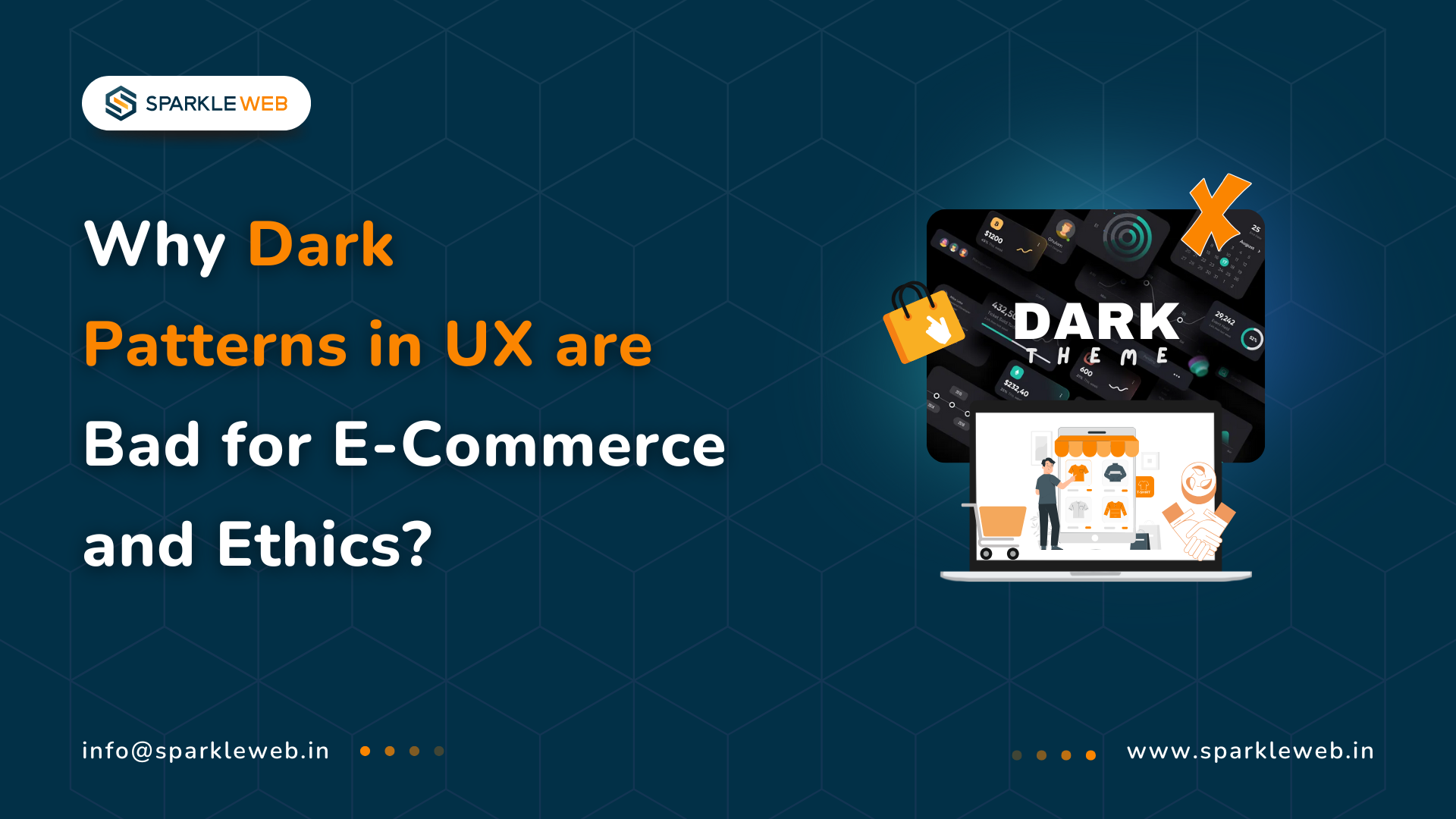When we visit websites, especially online shopping sites, we expect a smooth and honest experience. But sometimes, the design tricks us into doing things we don’t want to do. These tricks are called dark patterns.
Dark patterns are elements of a website or app designed to confuse users or prompt them into taking actions, such as purchasing an additional item, signing up for a subscription, or sharing more personal information. While these tricks may help businesses earn quick money, they can hurt customer trust and may even lead to legal trouble.
In this blog, we will explain what dark patterns are, why they are harmful to e-commerce businesses, and why designing honestly and ethically is always better.
What Are Dark Patterns?
Dark patterns are sneaky ways of designing websites or apps that encourage users to take actions they didn’t intend. These actions often benefit the business but make things harder or more confusing for users. Here are some common types of dark patterns:
1. Sneaky Subscriptions:
You think you are signing up for something free, but later you find out you have been added to a paid plan. The business didn’t make it clear that money would be charged.
2. Hidden Costs:
You add an item to your cart, and when you reach the final checkout page, extra charges appear. These could be handling fees or hidden taxes that weren’t mentioned before.
3. Confirm shaming:
This happens when websites use guilt to stop you from saying “No.” For example, when opting out of an offer, the button might say something like “No, I don’t want to save money,” making you feel bad about your choice.
4. Roach Motel:
It’s easy to sign up for a service, but when you try to cancel it, it becomes very hard. There may be no clear cancel button, or they make you call or email to cancel.
5. Misdirection:
The design focuses your attention on one button or option while hiding the other. You might miss the choice to cancel or skip because it’s small, hidden, or in a strange place.
6. Forced Continuity:
You sign up for a free trial, but to use it, you must enter your credit card information. After the trial ends, the website starts charging you automatically — without a clear reminder or easy way to stop it.
Why Dark Patterns Are Bad for E-Commerce
Using dark patterns may help a company earn money quickly, but it creates bigger problems later. Here are the main reasons dark patterns are harmful:
1. Loss of Customer Trust:
Trust is one of the most important parts of an online business. If a customer feels tricked or cheated, they will stop trusting the brand. They may also tell others not to shop from that store again.
According to the Baymard Institute, 18% of online shoppers leave their shopping carts because the checkout process is too long or confusing. Dark patterns often make this worse.
2. Higher Cart Abandonment:
When people see hidden fees or get confused during checkout, they often give up and leave the website without buying anything. A clear and simple shopping process makes customers more likely to finish their purchases.
3. Legal and Regulatory Problems:
Laws around the world are getting stricter about how companies treat users online. In Europe, the GDPR (General Data Protection Regulation) protects user rights. In California, the CCPA (California Consumer Privacy Act) does the same. Companies that use dark patterns may be breaking these laws.
4. Bad Reputation:
People often share their online experiences on social media and review sites. If a customer feels tricked, they might post negative reviews or complain online. This can cause big problems for the brand’s image.
5. Short-Term Profits, Long-Term Losses:
Dark patterns may increase sales for a short time, but in the long run, they drive customers away. When people feel manipulated, they tend to lose trust in the company. They may never return, and this lowers long-term income.
A UX Collective survey found that 76% of users said they would stop using a product or service if they found out it used dark patterns.
What Is Ethical UX Design?
Instead of tricking users, ethical UX design respects them. Ethical UX design means creating websites and apps that are honest, easy to understand, and helpful. Here are the key values:
1. Transparency:
Be clear about prices, terms, and what users are agreeing to. Don’t hide costs or surprise users with fees later.
2. User Control:
Let users make decisions easily. They should be able to unsubscribe, cancel, or say no without facing obstacles or guilt.
3. Honest Design:
Use plain and neutral language. Don’t try to pressure users or trick them. Let them decide freely.
4. Accessibility:
Make sure all buttons, menus, and content are easy to see and use on all devices. Everyone should be able to understand what’s going on.
Conclusion
Dark patterns may seem like a good way to boost sales, but they often backfire. They damage trust, reduce customer satisfaction, and may lead to fines or legal trouble. Good user experience design is not about tricking people — it’s about helping them.
When businesses build honest and easy-to-use websites, they earn trust and keep customers coming back. This leads to better relationships, stronger brands, and more success over time.
Have you seen dark patterns online? Maybe while trying to unsubscribe from a newsletter or cancel a free trial? Share your experience
here.
How Sparkle Web Can Help
At Sparkle Web, we believe in building websites that are clear, honest, and user-friendly. We help e-commerce businesses design platforms that build trust, increase conversions, and follow all legal and ethical standards. Whether you are starting a new online store or improving your current one, we will help you create a positive and lasting user experience.



Vikas Mishra
A highly skilled Angular & React Js Developer. Committed to delivering efficient, high-quality solutions by simplifying complex projects with technical expertise and innovative thinking.
Reply